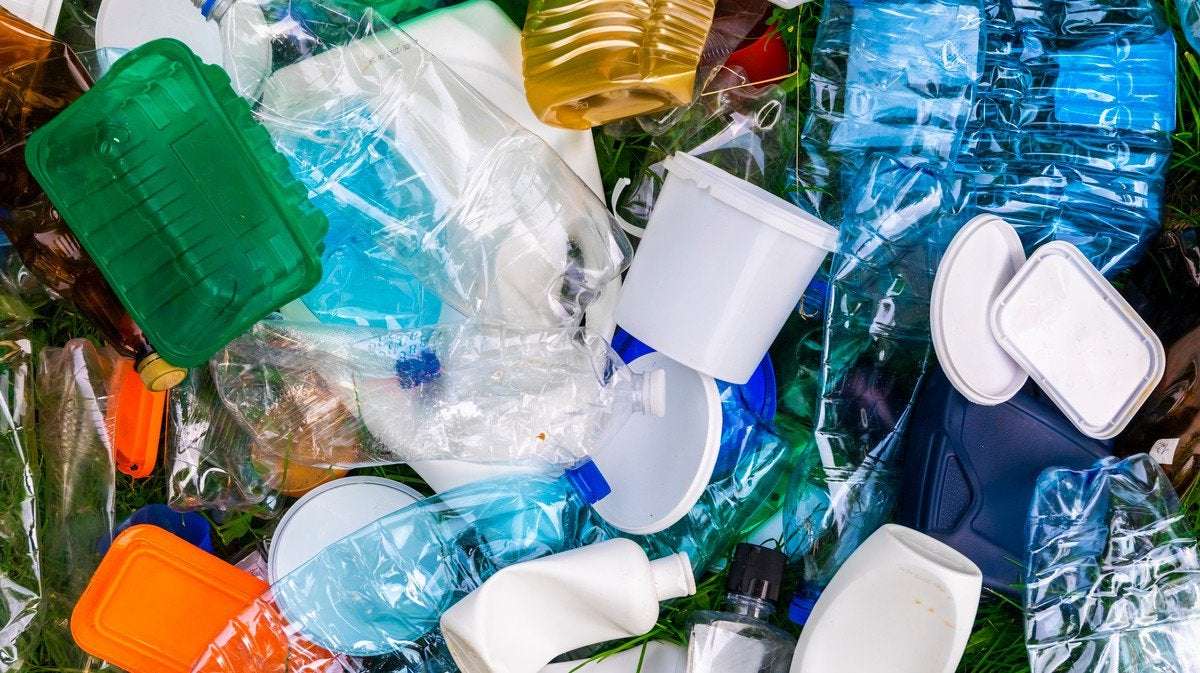ABSTRACT breaks down mind-bending scientific research, future tech, new discoveries, and major breakthroughs. See More →
A group of scientists at the University of Texas at Austin have created a modified enzyme that can break down plastics that would otherwise take centuries to degrade in a matter of days.
The researchers, who published their findings in the peer-reviewed journal Nature last week, used machine learning to land on mutations to create a fast-acting protein that can break down building blocks of polyethylene terephthalate (PET), a synthetic resin used in fibers for clothing and plastic that, per the study, accounts for 12 percent of global waste.
It does so through a process called depolymerization, in which a catalyst separates the building blocks that make up PET into their original monomers, which can then be repolymerized—built back into virgin plastic—and converted into other products. Most impressively, the enzymes broke down the plastic in one week.
“One thing we can do is we can break this down into its initial monomers,” Hal Alper, professor in Chemical Engineering and author on the paper, told Motherboard over the phone. “And that's what the enzyme does. And then once you have your original monomer, it’s as if you're making fresh plastic from scratch, with the benefit that you don't need to use additional petroleum resources.”
“This has advantages over traditional belt recycling,” Alper added. “If you were to melt the plastic and then remold it, you'd start to lose the integrity of the plastic each round that you go through with recycling. Versus here, if you're able to depolymerize and then chemically repolymerize, you can be making virgin PET plastic each and every time.”
Their work adds to an existing line of query on plastic-eating enzymes, which were first recorded in 2005 and have since been followed by the discovery of 19 distinct enzymes, the paper notes. These are derived from naturally occurring bacteria that have been located living on plastic in the environment.
But many of these naturally-occurring enzymes are made up of permutations of proteins that function well in their specific environments, but are limited by temperature and pH conditions, and thus can’t be used in a wide range of settings, like across recycling centers, the authors argue. The enzyme Alper and his team discovered, by contrast, can break down 51 types of PET across a range of temperature and pH conditions.
The researchers named the enzyme FAST-PETase, acronymic for “functional, active, stable, and tolerant PETase,” and they landed on its exact structure using machine learning. An algorithm was fed with 19,000 protein structures and taught to predict the positions of amino acids in a structure that are not optimized for their local environments. They also used the formula to rearrange amino acids from existing types of PETase into new positions, identified improved combinations, and landed on one structure that saw 2.4 times more activity than an existing PETase enzyme at 40 degrees Celsius and 38 times more activity at 50 degrees Celsius.
It was then tested across a range of temperatures and pH conditions, and continued to outperform existing variants.
“What you see in nature is probably somewhat optimal, at least within the local environment around each and every one of those amino acids,” Alper said. “We can start looking at the protein of interest, and start going through each and every one of the amino acids in there and looking at its own microenvironment and seeing what fits and what doesn't fit.”
Alper and his team’s hope is that their enzyme will be more scalable than most, and will truly put PET-ase to the test of tackling the global plastics crisis. Already able to withstand a range of conditions, FAST-PETase must now prove that it can be both “portable and affordable at large industrial scale.”

oxooc on May 9th, 2022 at 09:10 UTC »
This is great news! Why is this the solution to our plastic problem and isn't the solution at the same time?
I mean, it sure could be the solution but I'm pretty sure five years from now nothing has changed.
I need an ELI5 why science discovers these things but we aren't using them.
Sniffy4 on May 9th, 2022 at 05:59 UTC »
the thing is, better plastic recycling is fine, but what we really need is a plastic-like material that breaks down naturally like paper products, without extra additives
cturtl808 on May 9th, 2022 at 05:14 UTC »
Great. Let's get a move on with it. If it can withstand the ocean and won't harm sea life, add some there too.